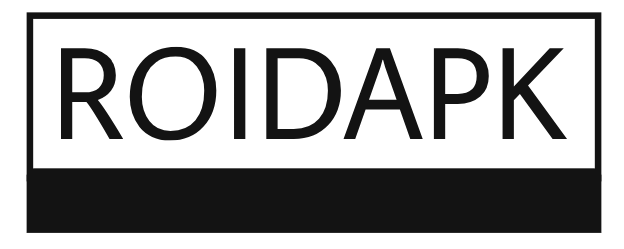In the fast-paced world of digital marketing, brands are in a constant battle for attention. With countless blog posts, videos, social media updates, and ads appearing in every corner of the internet, how can a brand stand out? The answer lies not just in what is said, but in how it’s said. And this is where storytelling becomes the game-changer in effective content creation.
Storytelling is one of the oldest forms of communication. From ancient myths to modern-day movies, stories have always captured human attention, stirred emotions, and inspired action. When used strategically, storytelling can transform ordinary content into memorable experiences that forge deep connections with your audience.
Let’s explore the role storytelling plays in content creation, and how you can harness it to create more compelling, engaging, and effective content.
Why Storytelling Works
At its core, storytelling works because it’s human. Our brains are wired to respond to narratives. When we hear a story, we don’t just process information — we feel it. That emotional connection makes the message stick.
Here’s why storytelling is so powerful in content creation:
1. It Grabs Attention
In an environment where people scroll through content in seconds, a good story acts as a hook. Whether it’s a relatable character, an intriguing conflict, or an emotional arc, stories naturally draw people in and keep them engaged longer.
2. It Builds Emotional Connection
Facts and figures may inform, but stories connect. When you tell a story, you invite your audience into an experience — one where they can see themselves, feel something, and build trust with your brand.
3. It Enhances Retention
People are more likely to remember a story than a list of features. Studies show that storytelling increases content recall, making your message stick long after the reader has moved on.
4. It Drives Action
Emotion is a key driver of decision-making. Storytelling taps into this by making your content more persuasive. Whether you want someone to subscribe, purchase, or share, a well-told story can nudge them toward action.

Storytelling in Different Types of Content
Effective storytelling isn’t just for long-form narratives or brand videos. It can be woven into all types of content — big or small. Let’s look at how storytelling can enhance different formats:
1. Blog Posts
Instead of diving straight into data or how-tos, start with a relatable scenario or personal anecdote. This instantly creates a narrative structure and draws the reader into the topic.
Example:
A blog post about overcoming marketing burnout could begin with a short story about a business owner feeling overwhelmed before discovering a time-saving strategy.
2. Videos
Video is a natural fit for storytelling. Use visual cues, music, and characters to tell a mini-story that illustrates your message. Keep it authentic and emotionally resonant to build connection.
Example:
A product video can follow a “before and after” journey of a customer solving a real-world problem using your solution.
3. Social Media
Even a short tweet or caption can tell a story. Use it to set up a situation, introduce tension, and offer a resolution — all in just a few sentences.
Example:
“Last year, we were struggling with shipping delays. Today, we’re delivering in under 24 hours. Here’s how we turned it around. 👇 #SmallBusinessWins”
4. Email Campaigns
Emails that tell stories — whether customer testimonials, founder journeys, or “behind the scenes” peeks — tend to have higher engagement. They feel personal and build a deeper relationship over time.
5. Case Studies
These are essentially mini-narratives about your customer’s transformation. Start with their challenge, show the solution you provided, and end with the positive outcome — all told like a story, not a sales pitch.
Elements of a Great Story in Content
A compelling story in content creation isn’t just about drama or fluff. It has a clear structure and a meaningful message. Here are the key components of an effective story:
1. A Relatable Character
This could be your customer, your team, or even your audience themselves. The character should reflect your target readers’ aspirations, challenges, or values.
2. A Conflict or Challenge
Every good story needs tension. Highlight the obstacle that the character faces. This sets the stage for your product, service, or insight to provide a solution.
3. A Journey
Stories are about transformation. Show how the character moves from problem to solution, from confusion to clarity. This journey is what creates emotional resonance.
4. A Clear Message
End your story with a takeaway. What’s the point of the story? What lesson, benefit, or call to action do you want your audience to walk away with?
How to Incorporate Storytelling Into Your Content Strategy
Building storytelling into your content doesn’t mean abandoning strategy. It means enhancing it. Here’s how you can align storytelling with content goals:
1. Start With Your Brand’s Story
Why does your business exist? What mission drives you? Crafting and sharing your origin story builds authenticity and helps differentiate you in a crowded market.
2. Use Customer Stories
Let your happy customers become your storytellers. Feature their journeys and results through testimonials, case studies, or interviews. Real stories add credibility.
3. Create a Story Arc in Your Campaigns
Think of your content calendar like a TV season — with each piece moving your audience through a bigger narrative. Start with awareness, build tension, and offer resolution through your product or service.
4. Be Authentic
Audiences are savvy. They can tell when a story is forced or exaggerated. Keep your storytelling real and rooted in genuine experience — that’s what earns trust and loyalty.
Examples of Storytelling That Converts
Many of today’s most successful brands use storytelling not just to engage — but to convert. Here are two quick examples:
Nike
Nike’s campaigns often don’t focus on product specs. Instead, they tell stories of athletes overcoming adversity. These emotional narratives inspire action and build brand loyalty.
Airbnb
Airbnb often highlights host or traveler stories. These real-life experiences make their service relatable and trustworthy, showing the human side of the platform.
When to Call in the Pros
Storytelling is both an art and a science. While some businesses excel at crafting compelling content in-house, others benefit from expert guidance. A skilled content creation company can help shape your brand narrative, identify emotional touchpoints, and deliver content that not only tells a good story—but achieves measurable results.
Whether it’s refining your message, scripting video content, or writing SEO-driven blogs with emotional depth, working with professionals ensures your content isn’t just seen — it’s felt.
Final Thoughts
In today’s attention-starved world, storytelling isn’t just a nice-to-have—it’s a necessity. It transforms bland content into meaningful messages. It helps people feel your brand before they ever consider buying. And most importantly, it drives action by creating emotional resonance.
If you want your content to rise above the noise and truly connect, start telling stories. Not just any stories—but authentic, purposeful, human stories that reflect the heart of your brand and the needs of your audience.
Because at the end of the day, people don’t just buy products. They buy into stories.

